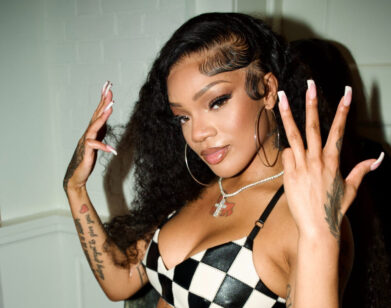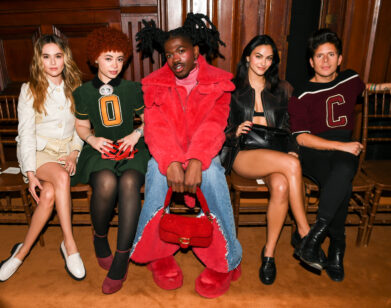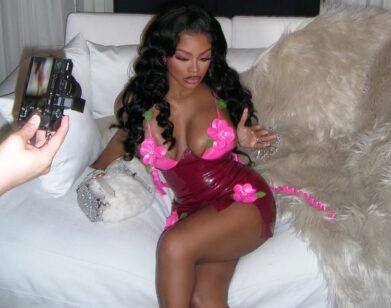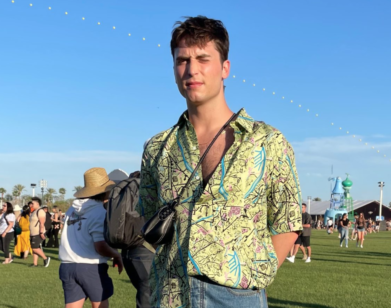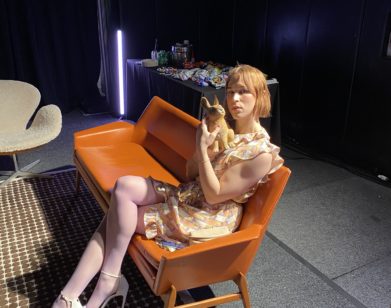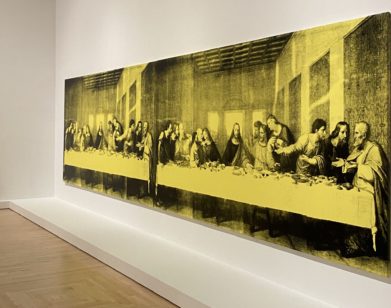let's have a kiki
Megan Thee Stallion, Dashaun Wesley, and Leiomy Maldonado on Bringing Ballroom to the Masses
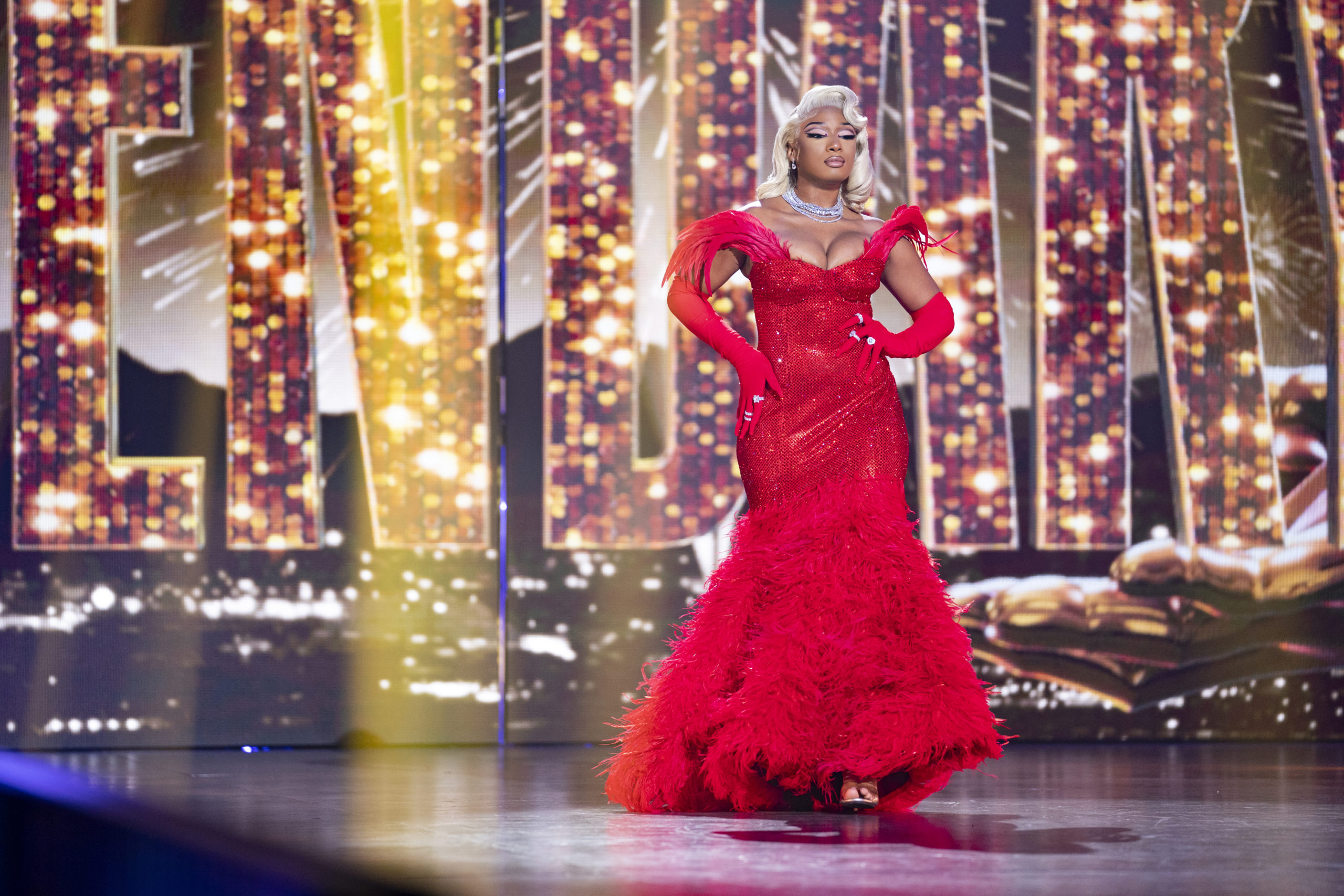
Megan Thee Stallion in Legendary. Photo courtesy HBO Max.
In the trailer for the second season of HBO Max’s ballroom competition series Legendary, judge Leiomy Maldonado boasts that the show is “bringing ballroom to the masses.” For an art form and community that has been marginalized for so long, it marks a dramatic shift in the paradigm, but it also begs the question: what happens to a historically underground culture when it gets a mainstream platform?
Underground ball competitions, which rose in prominence in the 1970s and ‘80s, have been inspiring pop culture from the shadows for decades. With its newfound public recognition, however, comes an increased pressure to take ownership of an art that, even now, is far too often not given its proper credit. The first season of the show exposed droves of new fans to modern-day ballroom and voguing, and the second season is even bolder and bigger than its predecessor. What was once a niche subculture now has the benefit of a gigantic streaming service and the judging prowess of one of the most in-demand entertainers in the world, Megan Thee Stallion.
Interview spoke with host Dashaun Wesley and judges Megan Thee Stallion and Leiomy Maldonado about staying vigilant during a time of exciting growth, the rise of queer representation on television, and demanding that the general culture acknowledges ballroom’s influence.
———
DANIEL TRAINOR: Going into the first season, there had to be so much intrigue and uncertainty about how the entire process would work. Having already been equipped with that knowledge heading into the second season, how was the experience different?
LEIOMY MALDONADO: After Season 1, I knew that whatever houses and participants were chosen, they were really going to bring the heat to the floor. Ballroom is known for its competition. Every single competition gets better and better and better. To be given this platform and this production value, with more of the things that we aren’t able to bring to our own ballroom floors, the ballroom scene was prepared for it. For the people who were introduced to ballroom through Season 1, they’re feeling like that was the top notch. It was the perfect way to open up these doors and homes that we haven’t reached. With the seasons getting better, it’s all unlimited. The talent is unlimited. This is only the beginning.
MEGAN THEE STALLION: Season 1 was epic and everyone knew they had to up their game for Season 2. From the houses that competed, to the judges, and our looks. You can go as wild and creative as you want to, and I was so excited to work with my team to come up with unique and fun looks for each episode.
DASHAUN WESLEY: Everybody was watching Season 1. So, now the houses have a little bit of an idea of what to expect. One thing I love about ballroom is that we know how to get through a situation or problem. COVID forced us to change things a bit. Audiences are a huge part of ballroom, but this time we didn’t have one. But you can focus on the competition a little bit more and you can have a direct vision of what’s happening. Without the crowd, you really get to see the talent and what they’re pushing hard for.
TRAINOR: Megan, what aspects of Legendary drew you to the show initially?
THEE STALLION: The ballroom scene is so iconic, and I was excited to learn more about that culture. It is so dramatic and theatrical, and the opportunity to see people create new exciting routines each week really drew me to the show.
TRAINOR: Prior to joining, what was your familiarity with ball culture?
THEE STALLION: I was aware of the ballroom culture, but I learned so much more being a part of Legendary. Meeting all the houses, seeing how they live and breathe this culture, it really showed me the dedication and devotion these families have to each other.
TRAINOR: I’m curious, Leiomy and Dashaun, as you’ve witnessed ballroom’s rise in popularity, how have you seen it change?
WESLEY: Within time, generations change, things shift, things upgrade and they move forward. As far as how it’s gotten to where it is today, you had the hard work of people like Leiomy, myself and others contributing so that the world can get a better understanding of how to approach and address our community. Not only did it take the work of these TV shows, you also had us traveling all over the world teaching classes, judging balls and having lectures. We were such a known entity through social media and the internet, but then we hit the mainstream. It’s important that we let everybody know that if they want to step up inside here, this is how it goes. You can’t just come up and step through. It’s going to shift, it’s going to change. I feel like there’s going to be a shift from what it is today in the next couple of years. The shift has been going on for many years.
MALDONADO: What’s most important for people from ballroom to understand is that we have to stay true to ourselves. There are times when we might have to change certain things in order for people to understand it in a better way. But overall, the opportunities that the ballroom scene is getting now allow us to be authentic. The ballroom community, just like any other community, it changes over time. It evolves. It’s about protecting our community, as well. A lot of times there are people coming around just to take from us and not give us the credit. Because we come from a community where we don’t have much, sometimes we tend to say yes to opportunities that may not be in the best interest for the community. With a show like this, it gives us a platform to have something of our own and to actually build the way we want it to be seen and respected.
TRAINOR: One of the hallmarks of the show is about “bringing ballroom to the masses.” Is there ever any concern about what happens to the art when this previously niche, underground culture and community gains traction in the mainstream?
MALDONADO: There was a time when I did worry about it. As a community, we didn’t have a voice. A lot of times, we were a part of the background. Now, we’re in the forefront. The people who are getting these opportunities are the ones who are working hard and deserve to be seen. When it comes to bringing ballroom to the mainstream, we have to realize that whatever we do or whoever we share this community with, it needs to bring positivity and change. Not only for the entertainment purposes, because I understand that, yes, the ballroom scene is entertaining overall, but this show gives people the insight and the background about why it’s so important to us in different ways. Not only in America, ballroom has been international for a long time now. The ballroom scene is very open to people coming in and learning, but we’re also very protective. That will keep us from being cheated. Not all the time, because we can’t always control these things. But for the most part, we have that. We’re going to protect ourselves.
TRAINOR: Theorizing about how Legendary impacts the culture moving forward is fascinating. What are your biggest hopes for the future of ballroom?
WESLEY: You know, although my experience was as real and authentic as it could be when I was a kid, I definitely wouldn’t want someone to go through that (laughs), but what I want is for people to have a better understanding of why we do what we do. The shift that’s happening right now? We have to take responsibility and full control. I’m glad we have a voice in some places and areas. The show can be a place where you learn how to add to your talents, so you can take them anywhere, no matter what pocket of life. We use this community to be great on the inside. Now that we have an opportunity to step outside of it, we can take those talents and bring them anywhere. Of course we’re going to see more shows and people in the community becoming bigger, better and greater, but we need to take full ownership of who we are and where we came from. Once people see that, it’s just going to keep growing. I look forward to it.
MALDONADO: My biggest hope for the future is that we can be in a place where people don’t say “oh, the ballroom scene from the underground.” It should become more normative, especially for women of trans experience and others within the community to not be deferred. I can’t wait until the future respects ballroom, even just the LGBTQ community overall. People forget why the ballroom scene was created and I like to remind them. We needed this community because we didn’t have a place of acceptance. Here we are now, opening our world and allowing people to come in here. We deserve respect. Give us our flowers. Give us the opportunities we deserve. You see talent? Pick us up. Get us booked. Pay us properly. I hope the future of ballroom involves us not having to work so hard to be seen.
TRAINOR: Ballroom has obviously always impacted pop culture in major ways, but how have you seen its influence trickle throughout the culture more readily in recent years? How does it make you feel to see pop stars using certain moves or other communities perhaps appropriating the language?
WESLEY: It’s definitely flattering to know that someone who you would never expect has picked up your lingo. For so many years, we thought we weren’t being paid attention to. We were receiving other types of messages. I’m definitely flattered to know that what we’re doing in the comfort of our own community can be inspiring to somebody on the outside. It’s beautiful and I think it’s cool. That’s why we talk a lot about taking full ownership. There could be a move that I have that somebody on the outside does, and nobody would know that it came from us. We have to make sure we’re still being acknowledged. The best form of flattery is getting the love from somebody who brought it to the attention of the world.
MALDONADO: Ballroom has inspired so much, but there needs to be more acknowledgment. Saying thank you for inspiration is okay. Even if you don’t want to use somebody for a project, at least tag them to say thank you. It happens. It happens with music videos. It happens with vocabulary. People hear something from ballroom and then they make a whole song based on it, claiming that they created it. It just sucks. Frankly, I’m tired of pointing it out. But a show like Legendary speaks for itself. People are learning how much ballroom has inspired the world. It’s opening so many eyes.
TRAINOR: Megan, have there been any facets of ball culture that you’re incorporated into your own performance aesthetic?
THEE STALLION: I can’t help but be inspired by the ballroom culture. The creativity and ingenuity is outstanding. We have incorporated ballroom into my music videos. In fact, if you look closely, you will see some familiar faces. It has also taught me to continue to perform at my best and give my all every time, because there is someone else right behind you that wants your spot.
TRAINOR: There’s been an influx of queer representation on television recently. Obviously, we’ve talked about Legendary and Pose, but there have also been shows like It’s A Sin and Genera+ion. That increased visibility is great, obviously, but what do you think we still need to see more of on our screens and what voices still aren’t being heard?
MALDONADO: They need to start spotlighting how my trans sisters are being murdered left and right. That’s something that people do not talk about. We don’t even get media coverage on that. Nobody is doing anything about it. It’s sickening. A lot of times, trans women are celebrated for their beauty and sexualized. But when it comes to our protection? There’s nothing.
WESLEY: I love the fact that our community is getting our shine right now. There’s so much talent in the world. We can be inspiring for a community that we don’t even know about. Maybe the J-Setting world can have an opportunity to see how our community works. The show We’re Here is showing that there’s placement for us. All spectrums of the LGBTQ community are being seen, but it’s not just about being seen, it’s about what’s being said, what’s being heard and what’s being done. Our representation is happening. Our inclusion is happening. Our visuals are happening. Legendary is doing just that. What was once underground is now mainstream. It’s now visible. The opportunity is there.

